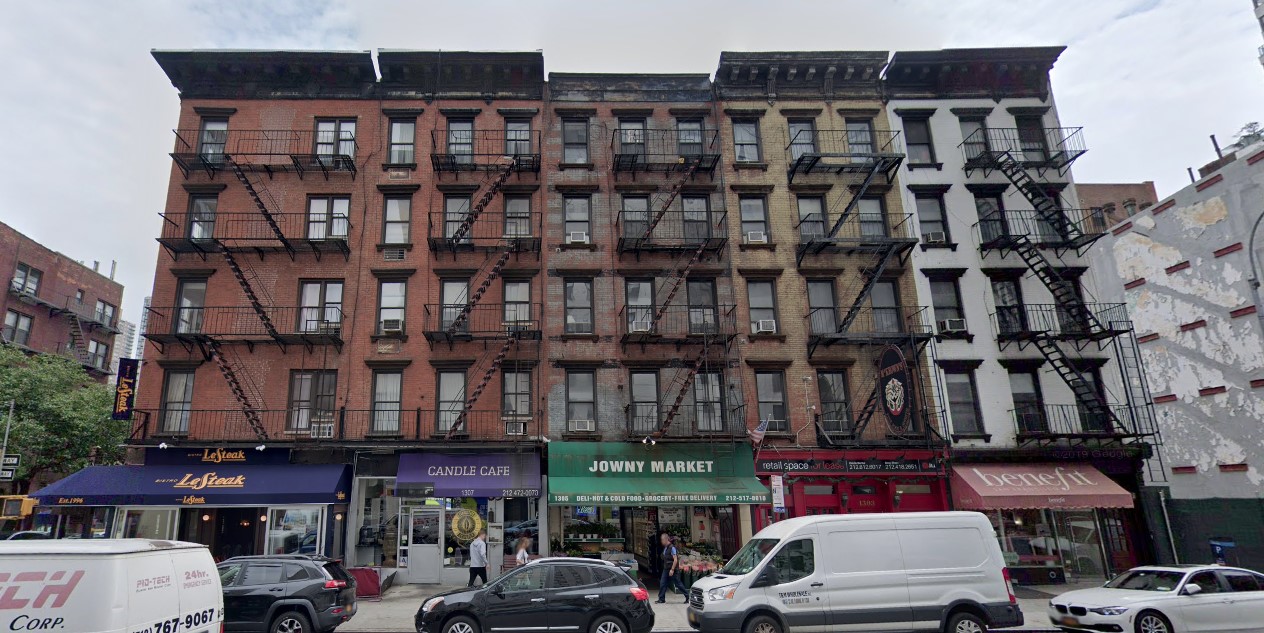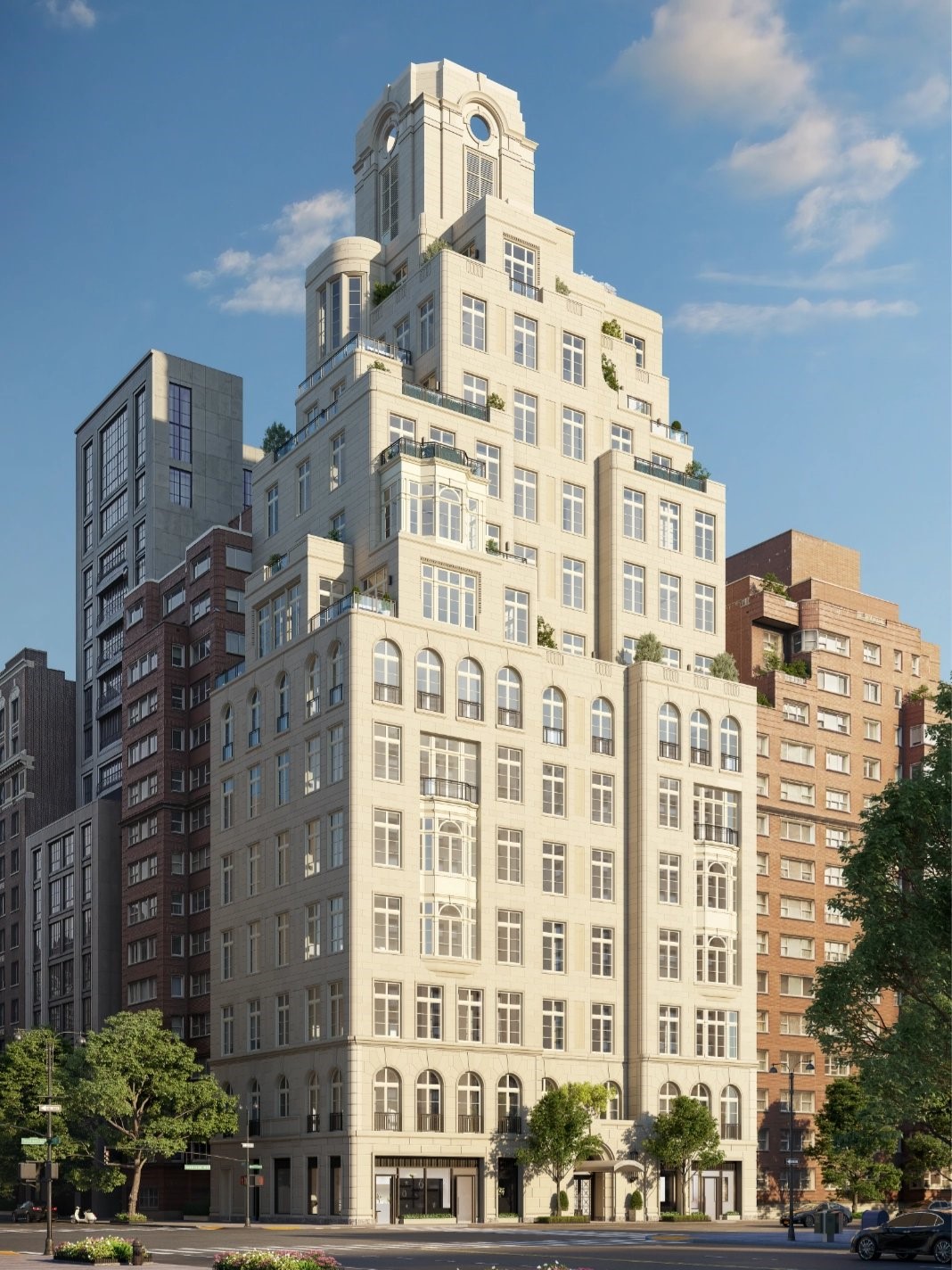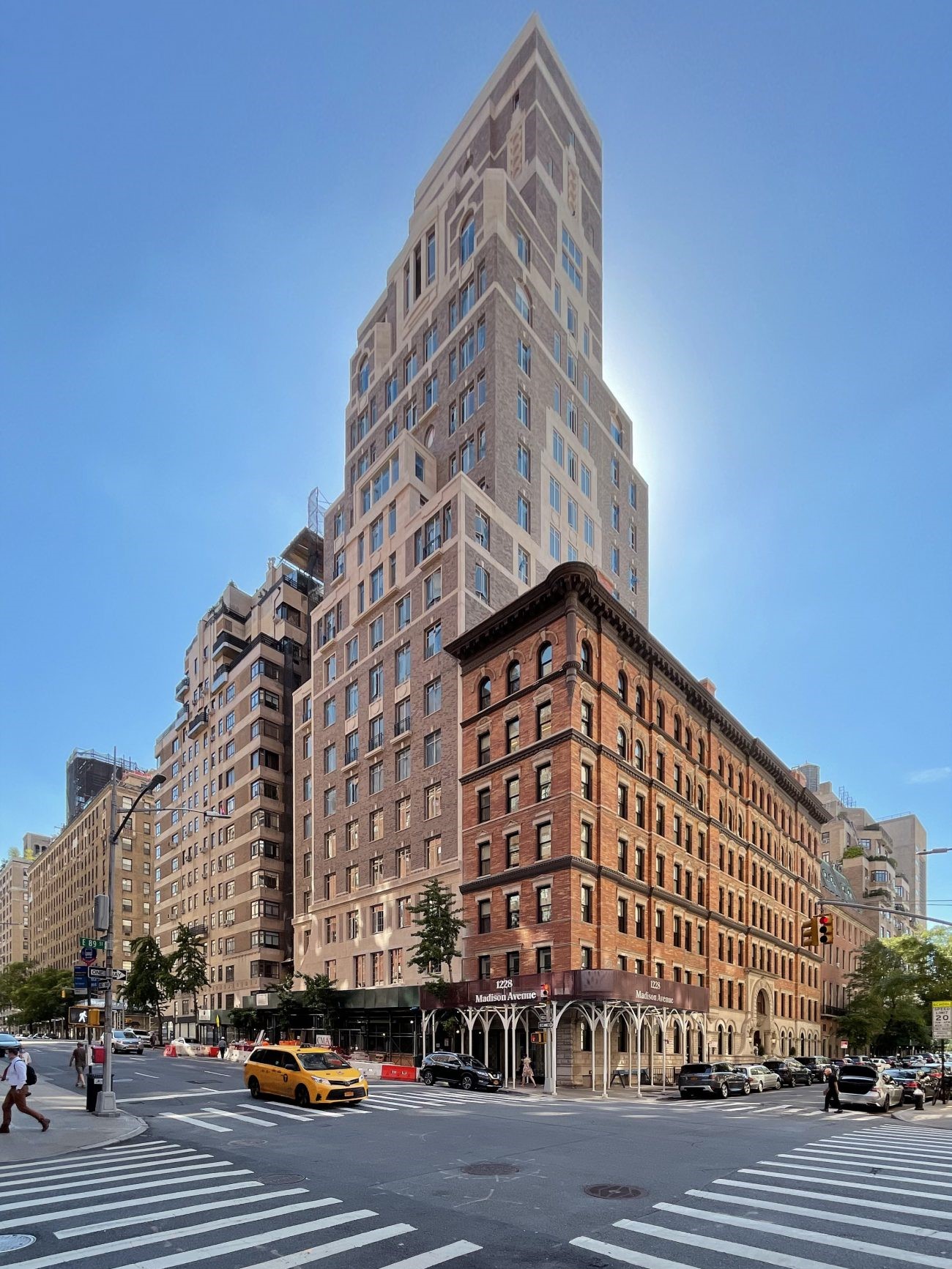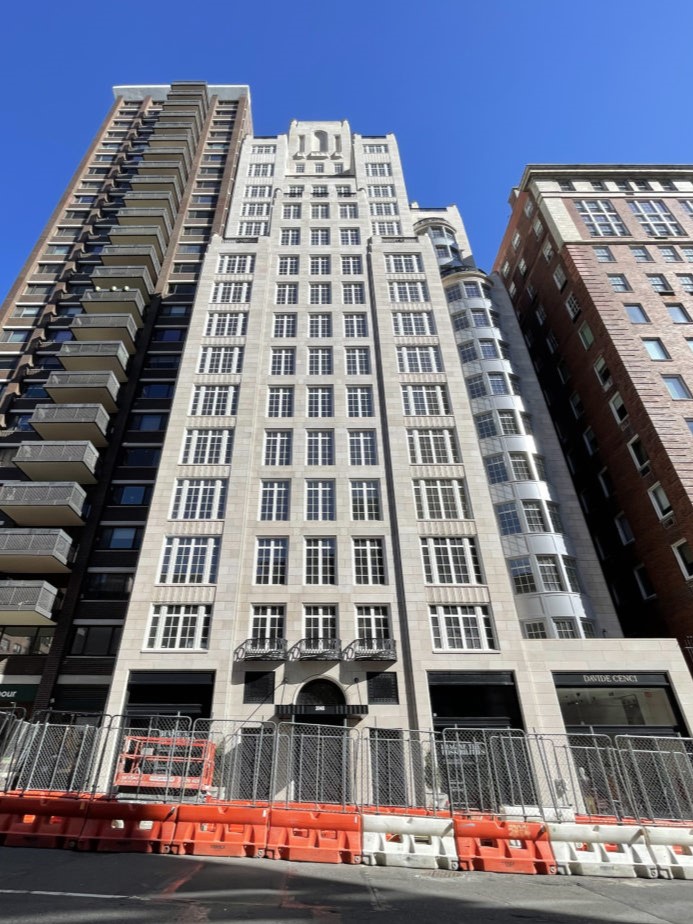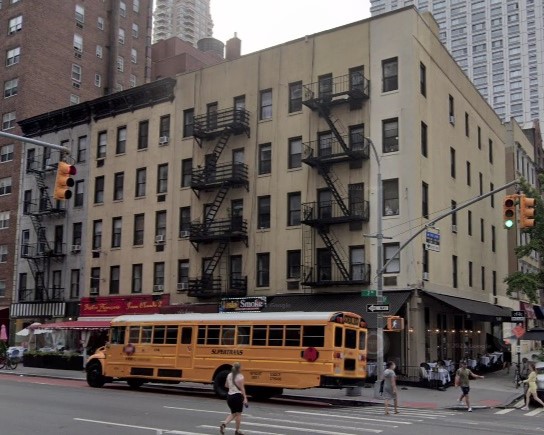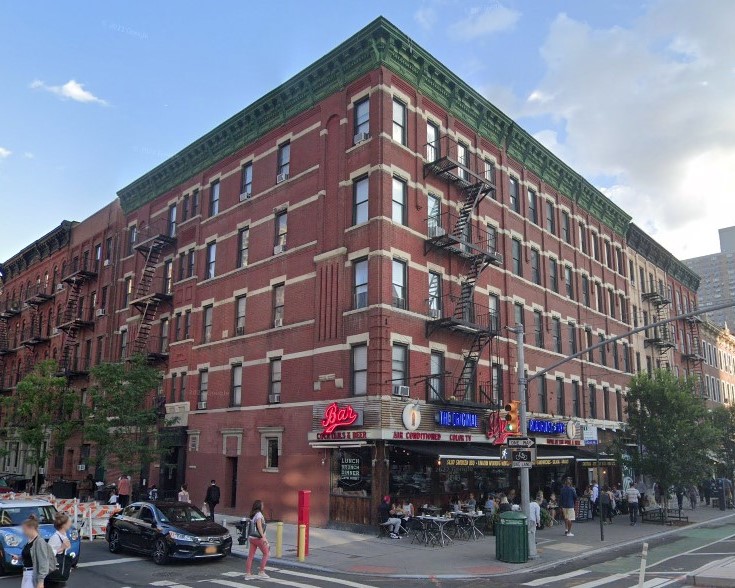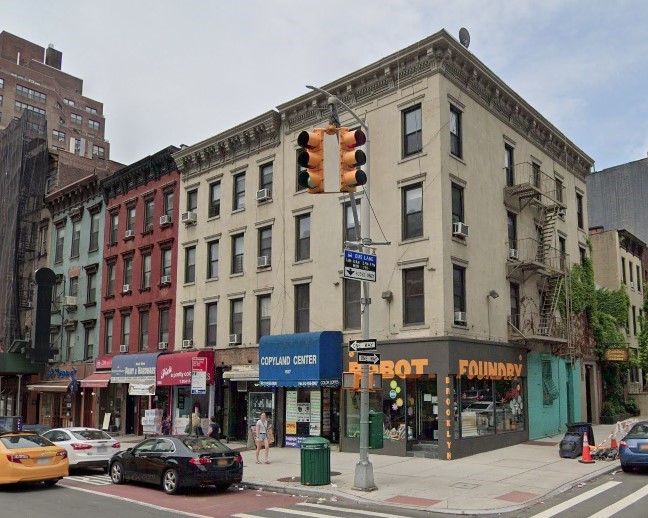Three of the four demolished tenements for the new EJS Group development at Third Avenue (numbers 1303 through 1309). 202 East 75th Street was also demolished. The demolished buildings had a total of 43 residential units and 4 commercial units, the new building will have only 38 apartments (averaging at 2,570 sq.ft. each) and no commercial ground floor.
Earlier this year, four historic tenement buildings on the southeast corner of East 75th Street and Third Avenue were demolished to pave way for a new 214 foot tall building, developed by the EJS Group and designed by Beyer Blinder Belle. While there are many new developments on the Upper East Side, this one was the lead of a deft article, “When a New High-Rise Means Less Housing,” by Kim Velsey, published in Curbed last month. The reason is that this 18-story luxury building will have five residential units fewer than the demolished tenement buildings.
“Historically, the Upper East Side has been one of the city’s densest neighborhoods, but building upward does not necessarily add to the density of people.”
Contrary to popular belief, higher buildings don't necessarily mean more housing, and reporter Kim Velsey agrees, noting that “bigger buildings with fewer units are not as uncommon as [one] might think.” On Madison Avenue alone there are at least three new developments topping 210 feet that contain very few units. The Bellemont at East 86th Street has only 11 units of an average 5,340 square feet each (including a quadruplex penthouse), 1228 Madison (at East 89th) has 13 units of an average of 3,940 square feet; and The Benson (at East 80th) has 14, at 4,050 square feet per unit.
As we know, large swaths of relatively affordable low-scale tenement buildings are being replaced by tall buildings at an alarming rate. But when small buildings are replaced by large ultra-luxury condos, historic fabric is not the only loss. These are 210+ foot buildings with fewer than 15 apartments each. The very same building envelopes could have accommodated many more reasonably-sized units, representing a significant loss in potential housing density. Beyond zoning loopholes which skirt the intent of zoning regulations to artificially inflate their height, sometimes it is the size of the units themselves which are growing, even on Madison Avenue within the existing height limit.
“Redevelopment tends toward the luxurious for the simple reason that once you’re building tall, the difference in construction price between a luxury apartment and a plain one is modest — but the difference in selling price is not.”
Economics dictate that new developments on the Upper East Side tend to be luxury buildings, and though most take advantage of the voluntary inclusionary housing bonus, the affordable units are rarely onsite. More housing does not equal affordable housing, and the issue persists even when there is a net positive number of residential units. Current residents are not only being priced out by increasing rents on existing buildings, they're also being displaced by the new developments targeting a wealthier demographic.
“It would be one thing if the extremely rich were simply adding their living spaces to the empty sky, so to speak, but increasingly they are swallowing up middle-class(-ish) spaces as they do it.”
The southwest corner of East 72nd Street and Second Avenue is being replaced by a 230 foot tall building. The site will have only four affordable units in a separate building facing East 71st Street.
The southwest corner of East 71st Street and Second Avenue is being replaced by a 214 foot tall building. Affordable housing unknown.
The southwest corner of East 78th Street and First Avenue is being replaced by a 209 foot tall building (part of the site has been demolished since 2011). Affordable housing unknown.
The southwest corner of East 88th Street and Second Avenue (formerly Café d’Alsace) is being replaced by a 270 foot tall building. Affordable housing unknown.
The southeast corner of East 83rd Street and Second Avenue is being replaced by a 272 foot tall building. Affordable housing unknown.
The southwest corner of East 83rd Street and Second Avenue is being replaced by a 272 foot tall building. Affordable housing unknown.
Increasingly, this is happening all over the Upper East Side. In addition to the proposal at the corner of East 75th Street and Third Avenue, there are at least six other sites along First, Second and Third Avenues between East 71st and East 88th street where historic tenements buildings are being demolished for the construction of new buildings in the range of 200-300 feet. While those may represent a slightly increase increase in housing units, the community is losing both affordability, and the many local small business that add to the character and sense of place of the neighborhood.
And there are many more sites where taller towers will and have replaced existing low-scale buildings. While FRIENDS firmly believes that the city is in desperate need of more affordable housing, these new buildings are not it, and in most cases they are displacing relatively affordable units as well as the small businesses which thrive in the bases of these century-old structures.
There are many other sites that are also vulnerable, including the corner of East 86th Street and Third Avenue, home since 1932 to the beloved Papaya King, and the former Wankel's Hardware building, a local family store that closed recently after 125 years, and was recently sold to a real estate investor.
We do not expect to preserve a crystallized version of the neighborhood, yet increasingly, the vital elements that make up the historic fabric and vibrant character of the Upper East Side are being lost to bulky new buildings. FRIENDS urges that the time for a holistic approach to neighborhood planning, rather than one-off fixes to address specific issues, is now.


